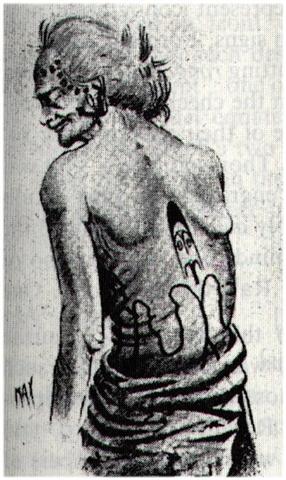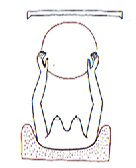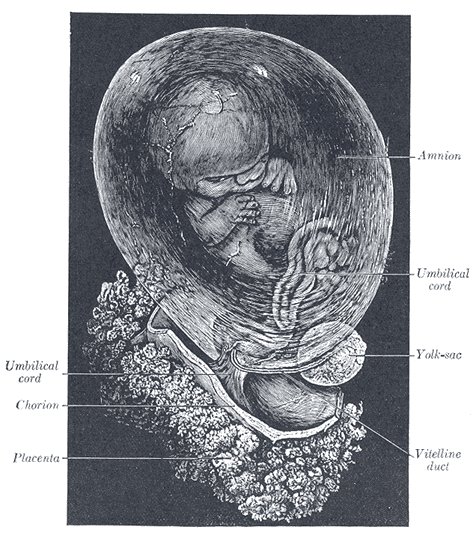Metoro said hoea at
Cb1-21, not fishhook but an instrument for tattooing. Old
women may have had tattooes also on their backs and possibly a claw of some
kind had been used for creating them.

| Magai
Fishhook (made of stone or of bone,
much more curved inward than the type of hook called
rou). Vanaga. |
|
Rou
Fishhook, distinct from the magai
for being more open. Vanaga. 1. Rou meamea, feather. 2.
A stick with a crook, a hook. Mgv.: rou, a
forked pole with which to gather breadfruit. Mq.:
óu, id. Ta.: rou, id. Churchill. |
| Hoe
Hoe 1. Paddle. Mgv.: hoe,
ohe, id. Mq., Ta.: hoe, id. 2. To
wheeze with fatigue (oeoe 2). Arero oeoe,
to stammer, to stutter; Mgv. oe, to make a
whistling sound in breathing; ohe, a cry from
a person out of breath. Mq.: oe, to wheeze
with fatigue. 3. Blade, knife; hoe hakaiu,
clasp-knife, jack-knife; hoe hakanemu,
clasp-knife; hoe pikopiko, pruning knife. 4.
Ta.: oheohe, a plant. Ma.: kohekohe,
id. Churchill. T. Paddle. E hoe te heiva =
'and to paddle (was their) pleasure'. Henry. Hoea, instrument for
tattooing. Barthel. |
|
*AUGUST
24 (236 = 390 / 2 + 41) |
25 (*157 = *314 / 2) |
26 |
|
"September 20 (*183) |
21 (264) |
EQUINOX |
|
'October 4 (277 = 236 +
41) |
5 |
6 (*199) |
|
October
31 (304 = 263 + 41) |
November
1 (*225) |
2 |
|
Al
Zubānā-14a /
Visakha-16 /
Root-3
(Badger)
ZUBEN ELGENUBI (Southern Claw) = α Librae
(224.2), ξ Bootis, ο Lupi (224.5) |
KOCHAB (Kakkab
= Star)
= β
Ursae Min. (225.0), ξ Librae (225.7) |
KE KWAN
(Cavalry Officer)
= β Lupi
(226.3),
KE KWAN
= κ Centauri (226.4),
ZUBEN
ELAKRIBI (Scorpion's Claw?)
= δ
Librae (226.8), π¹ Oct. (226.9) |
 |
 |
 |
|
Cb1-15 |
Cb1-16
(408 = 400 + 4 + 4) |
Cb1-17 |
| e
niu tu |
ki
te ariki - e ka hua ra tona rima |
koia kua iri i ruga o te rima - e o to vaha mea |
|
Bharani-2 /
Stomach-17
(Pheasant)
π Arietis (41.2),
MIRAM (Announcer?)
= η Persei (41.3),
BHARANI
(Bearer) = 41 Arietis (41.4),
τ² Eridani, σ Arietis (41.7) |
TA LING
(Great Mound)
= τ Persei (42.4) |
ρ Arietis (43.0),
GORGONEA
SECUNDA = π
Persei (43.5),
ACAMAR
= θ Eridani (43.6), ε Arietis (43.7), λ Ceti (43.9)
|
|
*FEBRUARY 22 (53 = 236 - 183) |
23
(TERMINALIA) |
24 |
|
"March
21 (80 = 263 - 183) |
22 |
23 |
|
'April 4 (94 = 277 -
183) |
5 |
6 |
|
°April
27 (117 = 80 + 37) |
28 |
29 |
|
May 1 (121 = 11 * 11 =
80 + 41) |
2 |
3 |
...
Ta'aroa tahi
tumu, 'Ta'aroa origl. stock' - most commonly
Ta'aroa or Te Tumu - existed before everything
except of a rock (Te Papa) which he compressed and
begat a daughter (Ahuone) that is Vegetable Mole.*
|
Tumu
1. Tree trunk. 2. Ancestors: tumu
matu'á, parents; tumu tupuna,
grandparents. By extension: tumu taína,
members of friendly families. 3. Como término muy
especial se usa tumu para se¤alar a familias
o personas que no son parientes, de modo que sus
hijos podían, según antigua usanza, casarse entre
ellos y formar un nuevo tronco. 4. Origin of
something; initiator of an idea; person who is the
cause of a fight: tumu taûa. 5. He-kore te
tumu, to be so weakened that you cannot stand
(lit.: the trunk is lacking). Vanaga.
Base, cause, element, origin,
principle, source, spring, trunk, occasion, author,
subject, motive; ina e tumu, accidental,
fortuitous; tumu kore, causeless, baseless,
weak in the legs, to waver; tumu o te hakareka,
toy; tumu hatihati, weak in the legs; tumu
o te hiriga, purpose of the voyage. T Pau.:
fakatumu, to lay a foundation. Mgv., Mq., Ta.:
tumu, cause, base, origin, principle, trunk.
Tumumeika (tumu - meika),
banana plant. Mgv., Mq.: tumumeika, id.
Churchill. |
* Ahuone
means 'earth heaped up' - a widespread name for the
Polynesian first woman. It sounds as if Cook also heard the
term applied to the banks of humus and rotting material on
which taro is grown. In the English of his day this
was known as 'vegetable mould' ...
|
*AUGUST
27 |
28 (240) |
|
"September 23 (266) |
24 (240
+ 27) |
|
'October
7 (*200) |
8 (240 +
41) |
|
November
3 (*227) |
4 (308 = 240 + 68) |
|
ω
Bootis (227.2),
NEKKAR (Herdsman)
= β Bootis (227.3), σ Librae (227.5), π² Oct.
(227.7),
NADLAT (Low little ones)
= ψ Bootis (227.8), π Lupi (227.9)
|
15h
(228.3)
ZUBEN HAKRABIM (Scorpion's Claw)
= ν
Librae (228.3), λ Lupi (228.9) |
 |
 |
|
Cb1-18 |
Cb1-19
(411 - 4 - 4 = 403) |
|
manu moe ra |
ki
to mata |
|
MENKAR
(Nose) = α Ceti
(44.7) |
3h (45.7)
GORGONEA TERTIA =
ρ Persei (45.1),
ALGOL
(Blinking Head of the Demon)
= β Persei (45.9) |
|
*FEBRUARY 25 |
26 (57) |
|
"March
24 (83 = 97 - 14) |
25 (57 + 27 = 3 * 28)
EQUINOX |
|
'April 7
(97 = 124 - 27) |
8 (98 =
57 + 41) |
|
°April
30 |
°May 1 |
|
May 4 |
5 (5 * 5
* 5) |
|
*AUGUST
29 |
30 (242
= 2 * 121) |
|
"September 25 (268) |
26 |
|
'October
9 (282) |
10 |
|
November
5 |
6 (310 =
242 + 68) |
|
ω Oct.
(229.3), ι Librae (229.6), κ Lupi (229.7), ζ Lupi
(229.8) |
Al
Zubānā-14b
χ
Bootis (230.3),
PRINCEPS
(Leader)
= δ Bootis (230.6),
ZUBEN
ELSCHEMALI (Northern Claw) = β Librae
(230.8) |
 |
 |
|
Cb1-20 |
Cb1-21
(413 = 354 + 59) |
| e
nuku mata |
hoea |
|
ι Persei (46.1),
MISAM
(Next to the Pleiades)
= κ Persei (46.2),
GORGONEA
QUARTA = ω Persei
(46.7),
BOTEIN
(Pair of Bellies)
= δ Arietis (46.9) |
ζ Arietis (47.7) |
|
*FEBRUARY 27 |
28 (59 =
2 * 29½) |
|
"March
26 (85) |
27 |
|
'April 9 |
10 (100) |
|
°May 2 |
3 (123) |
|
May 6 |
7 (127 =
59 + 68) |
The number of glyphs on side b of the G
tablet was determined to be 242. Given 121 for May 1 there could have been a
subdivision of the Sun year into 3 parts each measuring 121
days, because 3 * 121 = 363 = 366 - 3 = 11 * 33.
"The ancient Egyptian
calendar was a solar calendar with a 365-day year. The year
consisted of three seasons of 120 days each, plus an
intercalary month of 5 epagomenal days treated as outside of
the year proper. Each season was divided into four months of
30 days. These twelve months were initially numbered within
each season but came to also be known by the names of their
principal festivals. Each month was divided into three
10-day periods known as decans or decades. It has been
suggested that during the Nineteenth Dynasty and the
Twentieth Dynasty the last two days of each decan were
usually treated as a kind of weekend for the royal
craftsmen, with royal artisans free from work ...
... With its interior
effectively rainless for thousands of years, ancient Egypt
was 'a gift of the river' Nile, whose annual flooding
organized the year into three broad seasons known to the
Egyptians as:
Flood (Akhet),
Emergence (Peret), and
Low Water or Harvest (Shomu).
The first lasted from
roughly June to September, the second from roughly October
to January, and the last from roughly February to May."
(Wikipedia)
If this kind of system was remembered through the
ages and across the continents, then the beginning of May
could have been associated with where the Flood reached its
maximum after which
Land once again would E-Merge from having been Sub-Merged. Achet
implicated the emergence at the horizon in the east of a new
Sun:
  
 |
 |
 |
|
Cb1-22 |
Cb1-23 |
Cb1-24 |
|
ko te rima |
kua oo ki te vai |
ma te ua |
As was pointed out in
Manuscript E the birth of a baby is preceded by a release of Water:
... When Hotu's canoe had reached
Taharoa, the vaginal fluid (of Hotu's
pregnant wife) appeared. They sailed towards Hanga
Hoonu [Bay of Turtles], where the mucus (kovare seems to
refer to the amniotic sac in this case) appeared. They
sailed on and came to Rangi Meamea, where
the amniotic fluid ran out and the conctractions began.
They anchored the canoe in the front part of the bay, in
Hanga Rau. The canoe of Ava Rei Pua
also arrived and anchoraged. After Hotu's canoe
had anchoraged, the child of Vakai and Hotu
appeared. It was Tuu Maheke, son of Hotu,
a boy. After the canoe of Ava Rei Pua had also
arrived and anchoraged, the child of Ava Rei Pua
was born. It was a girl named Ava Rei Pua Poki
...
|
Ruku
(Also rukuruku): To dive;
to fish underwater; diving; i-turu-era au ki
tai, he-ûi koai te tagata era, e-ruku-mai-era i
te îka, i te ura, as I went down to the sea,
I saw who those people were, who were fishing
underwater for fish and lobsters. Vanaga.
To bathe, to immerse, to swim
face down, to dive, to leap into the water from
a height. Hakaruku, to cover with water,
to immerse, to submerge, to moisten, to wash, to
drink. P Mgv.: ruku, to dive, to plunge.
Mq.: úku, to dive, to immerse. Churchill. |
|
Re
Pau.:
victory. Ta.: re,
prize in any contest, prey. Mgv.:
Re-mai,
to emerge from prison, to recover from illness,
delivered from evil. Mq.:
ee,
to go, to escape. Sa.:
lele,
to go out (of the passing soul). Ha.:
lele,
to depart (of the spirit). Churchill. |
| Mau
Mau. 1. Very, highly;
ûka keukeu mau, very hard-working girl. 2.
To be plentiful; he-mau to te kaiga, the
island abounds in food. 3. Properly. Ma'u.
1. To carry, to transport; he-ma'u-mai,
to bring; he-ma'u-atu, to remove, ma'u
tako'a, to take away with oneself; te
tagata hau-ha'a i raro, ina ekó ma'u-tako'a i te
hauha'a o te kaiga nei ana mate; bienes
terrenales cuando muere
→ a rich man
in this world world cannot take his earthly
belongings with him when he dies. 2. To fasten,
to hold something fast, to be firm; ku ma'u-á
te veo, the nail holds fast. 3. To contain,
to hold back; kai ma'u te tagi i roto, he
could not hold his tears back. Vanaga.
1. As soon as, since. 2.
Several; te mau tagata, a collective use.
3. Food, meat; mau nui, abundance of
food, provision, harvest; mau ke avai,
abundance. 4. End, to take away. 5. To hold, to
seize, to detain, to arrest, to retain, to
catch, to grasp. 6. Certain, sure, true,
correct, to confide in; mau roa,
indubitable, sure. 7. Fixed, constant, firm,
stable, resolute, calm; tae mau, not
fixed, unstable; mau no, stable;
hakamau, to make firm, to attach, to
consolidate, to tie, to assure; pena hakamau,
bridle; hakamau ihoiho, to immortalize;
hakamau iho, restoration. 8. To give, to
accord, to remit, to satisfy, to deliver; to
accept, to adopt, debt; to embark, to raise.
Mamau. To arrest. Churchill.
OR. All. Fischer. T. 1. Really. E ari'i mau
teie vahine = this woman really is a
princess. 2. Things. Te mau mautai =
plenty of things. 3. Hold. A toro te a'a, a
mau te one = the roots spread and held the
sand. Henry. |

|








